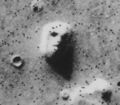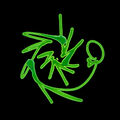Template:Selected anniversaries/October 21: Difference between revisions
Jump to navigation
Jump to search
No edit summary |
No edit summary |
||
| Line 10: | Line 10: | ||
File:Nicolaus I Bernoulli.jpg|link=Nicolaus I Bernoulli (nonfiction)|1687: Mathematician and theorist [[Nicolaus I Bernoulli (nonfiction)|Nicolaus I Bernoulli]] born. He will introduce a successful resolution to the [[St. Petersburg paradox (nonfiction)|St. Petersburg paradox]]. | File:Nicolaus I Bernoulli.jpg|link=Nicolaus I Bernoulli (nonfiction)|1687: Mathematician and theorist [[Nicolaus I Bernoulli (nonfiction)|Nicolaus I Bernoulli]] born. He will introduce a successful resolution to the [[St. Petersburg paradox (nonfiction)|St. Petersburg paradox]]. | ||
|| | ||1788: George Combe born ... lawyer who turned to the promotion of phrenology and published several works on the subject. He followed Franz Josef Gall in Paris. Gall was a French physician who identified a number of areas on the surface of the head that he linked with specific localizations of cerebral functions and the underlying attributes of the human personality. Combe established the first infant school in Edinburgh and gave evening lectures. He studied the criminal classes and lunatic asylums wishing to reform them. Pic. | ||
|| | ||1823: Enrico Betti born ... mathematician, now remembered mostly for his 1871 paper on topology that led to the later naming after him of the Betti numbers. | ||
|| | ||1833: Alfred Nobel born ... chemist and engineer, invented dynamite and founded the Nobel Prize. | ||
|| | ||1872: Jacques Babinet dies ... physicist, mathematician, and astronomer. | ||
|| | ||1877: Oswald Avery born ... physician and microbiologist. | ||
|| | ||1881: Heinrich Eduard Heine dies ... mathematician. Heine became known for results on special functions and in real analysis. In particular, he authored an important treatise on spherical harmonics and Legendre functions (''Handbuch der Kugelfunctionen''). He also investigated basic hypergeometric series. He introduced the Mehler–Heine formula. Pic. | ||
|| | ||1886: Frederick Guthrie dies ... physicist and chemist and academic author. Pic. | ||
||1911 | ||1903: Llewellyn Hilleth Thomas born ... physicist and applied mathematician. He is best known for his contributions to atomic physics, | ||
||1911: Mary Blair born ... illustrator and animator. | |||
File:Martin Gardner.jpg|link=Martin Gardner (nonfiction)|1914: Mathematics and science writer [[Martin Gardner (nonfiction)|Martin Gardner]] born. His interests will include stage magic, scientific skepticism, philosophy, religion, and literature. | File:Martin Gardner.jpg|link=Martin Gardner (nonfiction)|1914: Mathematics and science writer [[Martin Gardner (nonfiction)|Martin Gardner]] born. His interests will include stage magic, scientific skepticism, philosophy, religion, and literature. | ||
||Mikhail Yakovlevich Suslin | ||1919: Mikhail Yakovlevich Suslin dies ... mathematician who made major contributions to the fields of general topology and descriptive set theory. His name is especially associated to Suslin's problem, a question relating to totally ordered sets. | ||
||1921 | ||1921: Ingrid van Houten-Groeneveld born ... astronomer and academic. | ||
||1931 | ||1931: The Sakurakai, a secret society in the Imperial Japanese Army, launches an abortive coup d'état attempt. | ||
File:Martian face.jpg|link=Pareidolia (nonfiction)|1958: National [[Pareidolia (nonfiction)|Pareidolia]] Day declared in the United States. | File:Martian face.jpg|link=Pareidolia (nonfiction)|1958: National [[Pareidolia (nonfiction)|Pareidolia]] Day declared in the United States. | ||
||1959 | ||1959: In New York City, the Solomon R. Guggenheim Museum, designed by Frank Lloyd Wright, opens to the public. | ||
||1959 | ||1959: U.S. President Dwight D. Eisenhower signs an executive order transferring Wernher von Braun and other German scientists from the United States Army to NASA. | ||
||1961: First attempt at Project Ford West fails: the copper needles fail to disperse. | ||1961: First attempt at Project Ford West fails: the copper needles fail to disperse. | ||
||1967 | ||1967: The Soviet space probe Venera 4 became the first spacecraft to perform direct in situ analysis of the environment of another planet (Venus). | ||
||Ejnar Hertzsprung | ||1967: Ejnar Hertzsprung dies ... chemist and astronomer, born in Copenhagen, Denmark. In the period 1911–1913, together with Henry Norris Russell, he developed the Hertzsprung–Russell diagram. | ||
File:Wacław Sierpiński.jpg|link=Wacław Sierpiński (nonfiction)|1969: Mathematician and academic [[Wacław Sierpiński (nonfiction)|Wacław Sierpiński]] dies. He made important contributions to set theory (research on the axiom of choice and the continuum hypothesis), number theory, theory of functions, and topology. | File:Wacław Sierpiński.jpg|link=Wacław Sierpiński (nonfiction)|1969: Mathematician and academic [[Wacław Sierpiński (nonfiction)|Wacław Sierpiński]] dies. He made important contributions to set theory (research on the axiom of choice and the continuum hypothesis), number theory, theory of functions, and topology. | ||
||1978 | ||1978: Australian civilian pilot Frederick Valentich vanishes in a Cessna 182 over the Bass Strait south of Melbourne, after reporting contact with an unidentified aircraft. | ||
||1980 | ||1980: Hans Asperger dies ... physician and psychologist. | ||
|| Nicholas Kemmer | ||1998: Nicholas Kemmer dies ... nuclear physicist working in Britain, who played an integral and leading edge role in United Kingdom's nuclear program. Pic. | ||
||Dirk Jan Struik | ||2000: Dirk Jan Struik dies ... mathematician, historian of mathematics, and Marxian theoretician. Pic. | ||
||Bernhard Hermann Neumann | ||2002: Bernhard Hermann Neumann dies ... mathematician who was a leader in the study of group theory. Pic. | ||
||2005 | ||2005: Images of the dwarf planet Eris are taken and subsequently used in documenting its discovery by the team of Michael E. Brown, Chad Trujillo, and David L. Rabinowitz. | ||
||George Daniels | ||2011: George Daniels dies ... horologist who was considered to be the best in the world during his lifetime. He was one of the few modern watchmakers who built complete watches by hand (including the case and dial). But it was his creation of the coaxial escapement for which he is most remembered. The movement, which removed the need to add a lubricant, has been used by Omega in their highest-grade watches since 1999. Pic. https://en.wikipedia.org/wiki/George_Daniels_(watchmaker) | ||
File:Green_Spiral_9.jpg|link=Green Spiral 9 (nonfiction)|2017: ''[[Green Spiral 9 (nonfiction)|Green Spiral 9]]'' feels more green than ever, according to new [[Chromatography (nonfiction)|chromatographic survey]]. | File:Green_Spiral_9.jpg|link=Green Spiral 9 (nonfiction)|2017: ''[[Green Spiral 9 (nonfiction)|Green Spiral 9]]'' feels more green than ever, according to new [[Chromatography (nonfiction)|chromatographic survey]]. | ||
Revision as of 09:15, 15 August 2018
1687: Mathematician and theorist Nicolaus I Bernoulli born. He will introduce a successful resolution to the St. Petersburg paradox.
1914: Mathematics and science writer Martin Gardner born. His interests will include stage magic, scientific skepticism, philosophy, religion, and literature.
1958: National Pareidolia Day declared in the United States.
1969: Mathematician and academic Wacław Sierpiński dies. He made important contributions to set theory (research on the axiom of choice and the continuum hypothesis), number theory, theory of functions, and topology.
2017: Green Spiral 9 feels more green than ever, according to new chromatographic survey.




